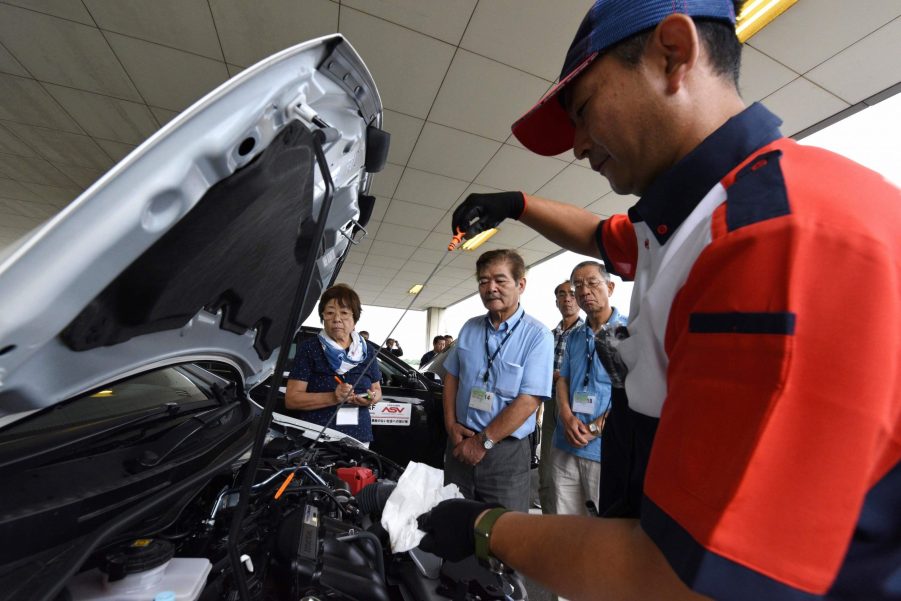
Oil Dipsticks Are Disappearing From New Cars at an Alarming Rate
The oil dipstick is easily one of the most laymans friendly car maintenance devices in cars since the gasoline cap. However, as cars get increasingly digitized and, in return, less analog, this beautifully simple device is rapidly disappearing.

The oil dipstick is the friendliest car maintenance tool
Whether it’s your first day driving or you are 100-years-old, the dipstick can be easily found and implemented in servicing your car’s oil. As long as your car is parked on a level surface and the engine is cool (depending on what car you have, this can vary), the engine’s oil supply and oil health are easily accessed with the oil stick and a napkin.
The fact that some newer cars are foregoing the dipstick for digital versions isn’t just a thing for older folks to grumble about. These newer technologies are great, but in this case, it is “fixing” a non-problem.
As The Drive keenly points out, the beauty of the oil dipstick is its simplicity. It requires no sensors that can be easily confused, no parts that can malfunction, or anything that your average person couldn’t figure out.
Where is the dipstick?
According to The Drive, one of the main examples of the disappearing dipstick is the 2021 Toyota GR Supra 3.0. Toyota has decided to sell a car without a dipstick. This has made the simple act of checking your oil level and cleanliness unnecessarily complicated.

The Supra requires you to park in a level spot (at least that part is the same) and dig into the infotainment to find the “check oil” program, which reportedly takes a good five minutes to perform.
Some may see this as “more convenient,” but that’s like saying a robot that ties shoes is more convenient because you don’t have to bend over anymore. That doesn’t feel like a real problem that needs fixing.
How does this lack of oil dipstick affect the day-to-day
Peter Nelson, a writer from CarBibles, mentions that he was alerted that it needed oil while testing the Supra. That notification in and of itself is handy, as is putting oil in the car. However, knowing how much oil to put in the motor can be pretty tricky without a dipstick.

Nelson said, “It gave me a heads-up to add a quart of oil to reach the minimum level. When I added just over a quart, the measured level was way higher than the minimum level.” He brings up another strong point with this little anecdote.
“If a user can’t be bothered to check a dipstick, are they going to be capable of selecting and then adding their own oil? Or are we expected to drive to a Toyota dealership any time the engine’s down a touch?”
Technology isn’t always helpful
It may sound like a bit of automotive snobbery, but Nelson is making a strong point here. Essentially, these OEMs are saying, “we think you are too inept to check the oil but still think you can add oil yourself.”
This is silly, of course, but if this is the way they want to go, why not at least keep the dipstick as a backup for the computer gizmo? This will appease the grumpy old folks (like Nelson and me) while also giving drivers an easy way to make sure they aren’t overfilling the oil.
New technology is great and makes driving easier and more convenient for millions of people. However, just because we can add new things to our cars doesn’t always mean we should.



